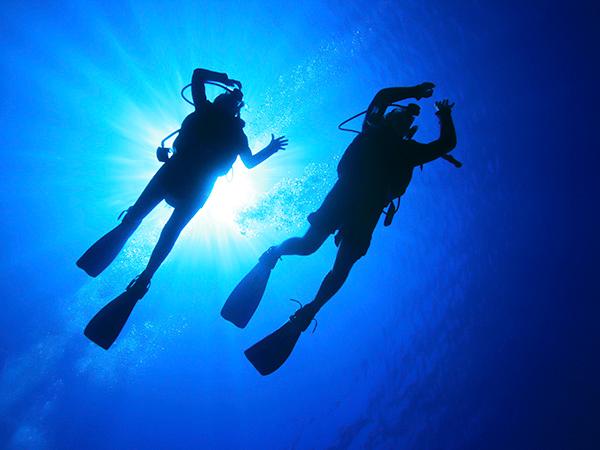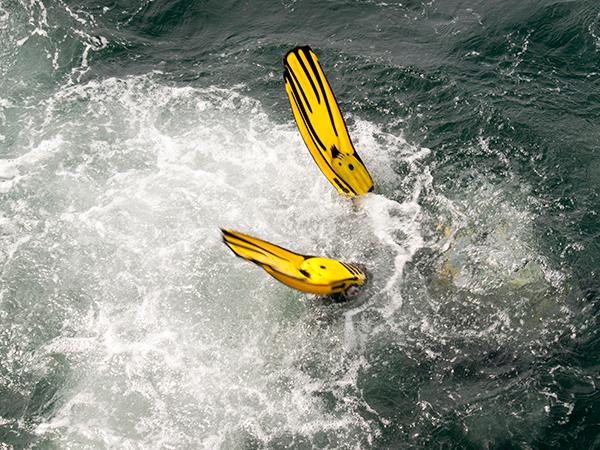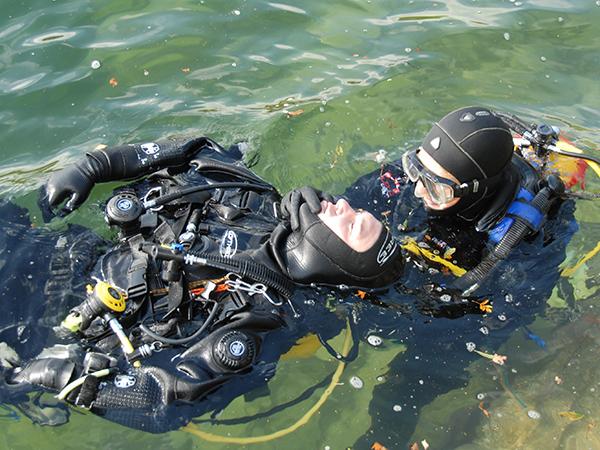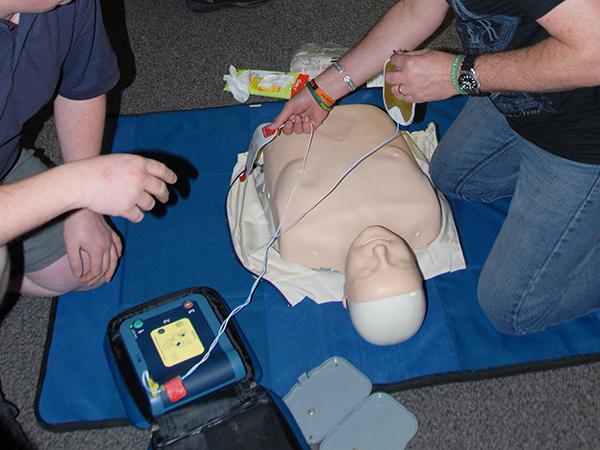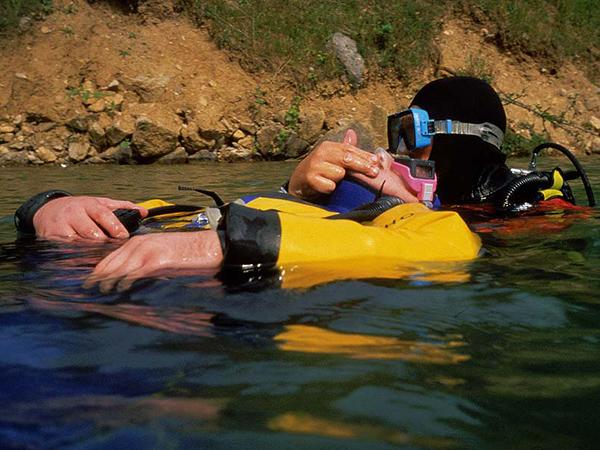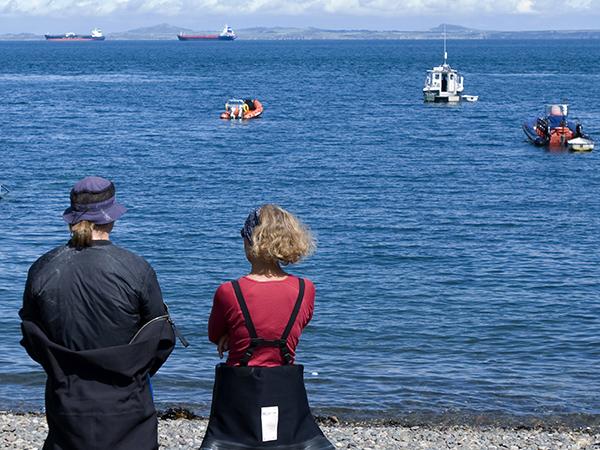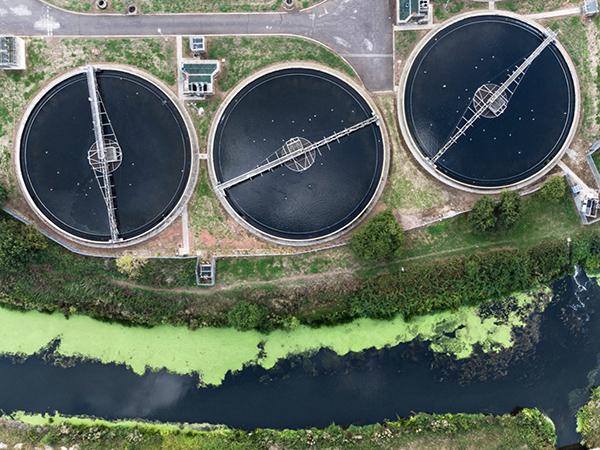The Global Maritime Distress and Safety System (GMDSS) and the functionality that divers can use from the system.
VHF Marine Radio
There are some features in modern VHF Radios that can be useful to divers if used correctly.
Digital selective calling (DSC)
Digital selective calling (DSC) can be used to call the Coastguard for routine traffic to report start and finish of diving activities for instance. This is particularly useful in busy radio traffic areas and times so you’re not waiting to call in. The radio should be programmed with the Marine Mobile Service Identifier (MMSI) of the local Coastguard that you are reporting to coastalradio.org.uk
More information on Ships' Radio and Ship Portable Radio
Distress alerting
Distress alerting is only used when there is an imminent danger to the vessel or the people on board – this can also include missing divers. Your vessels MMSI (if programmed into your radio), position (if the GPS is connected to the radio) and the nature of your problem (if set up) is sent digitally to all vessels and stations within radio range. Normal voice communication is then established with the coastguard to confirm the problem and the nature of assistance that is required, using the system like this can save valuable time in the event of an emergency. I’ve noticed that a few club owned dive boats have not wired their radio to the GPS so will not send the full distress message when the red button is pressed. To connect the sets is really easy you just need to connect the NMEA out lead from the GPS to the NMEA in lead on the radio. There’s usually a common earth via the power lead, the GPS will need to be set to the correct output protocol (NMEA), refer to the manuals for full information.
To connect the sets is really easy you just need to connect the NMEA out lead from the GPS to the NMEA in lead on the radio. There’s usually a common earth via the power lead, the GPS will need to be set to the correct output protocol (NMEA), refer to the manuals for full information.
Communication check
Communication check is not part of GMDSS but common sense. Most club boats now report to the coastguard their dive plan and estimated return time to their launch position as a matter of routine. This not only communicates your plan but also checks the condition of your radio, antenna and power leads which all have an effect on the transmission range.
There are now Marine VHF radios now available with integrated GPS, so all you have to do is programme your boats MMSI into it once installed and you're ready to go.
Automatic identification system (AIS)
Automatic identification system (AIS) is useful if you have a chart-plotter and you want to see larger vessels within your immediate area. Each vessel over 300tg has to transmit their position, course, speed and other data via a small transmitter using two frequencies within the marine VHF band. You will need a separate receiver to pick up this signal which connects to the chart-plotter (NMEA data again) which then shows the vessels on the chart-plotter screen. You will either need an antenna splitter or a second carefully positioned marine VHF antenna to receive the signals. The reason for this is that when you transmit on your radio the AIS receiver has to be isolated from the signal going out otherwise it could be damaged.
Again there are some radios with an integrated AIS receiver and splitter so this is a good alternative to separate units. There is also at least one marine VHF radio with both AIS and GPS receivers integrated into the radio itself.
Emergency position indicating radio beacon (EPIRB)
Emergency position indicating radio beacon (EPIRB) can be used on a vessel or as a personal device on a diver to transmit a signal to a satellite that there is a problem that requires the help of the rescue agencies. The satellites are monitored globally and constantly although the satellites are like buses in that there might not be one around when you need it. The distress signal is likely to be received within one
The distress signal is likely to be received within one hour. Most of these devices have an integral GPS receiver so that the position of the casualty is relayed to the Coastguard. If the EPIRB doesn’t have an integral GPS the approximate (5km) location can be worked out by the satellite from the signal it receives. Some devices also have a small radio transmitter that a helicopter, aircraft or lifeboat can home in on and finally locate the casualty.
GPS-enabled EPIRBs
GPS-enabled EPIRBs have a built-in transmitter which will typically alert the rescue services within 3 minutes and to a positional accuracy of +/- 50 metres (updated every 20 minutes) given a clear view skywards.
Personal locator beacon (PLB)
Personal locator beacon (PLB) has been largely superseded by the introduction of the EPIRB. However there are some still around and they can be used for a helicopter, aircraft or lifeboat to home in on and finally locate the casualty.
Electronic visual distress signals (EVDS)
Electronic visual distress signals (EVDS) also known as electronic flares are not covered by the GMDSS standard. In reality, these are only a bright electric flashlight. Also available is a laser rescue flare, which is visible up to 20 miles away in optimal conditions. All these devices are not effective during daylight hours.
From a practical perspective, EVDS produce a light pattern that is different to the intense burn of a conventional flare and there is some concern that this might not be recognised as a distress alert.
The advice, therefore, is that where carriage is not mandatory, EVDS should not be carried as a substitute for conventional pyrotechnic flares if the intention is to use them as the primary means of signalling distress. However, commercial and recreational vessels of any size may carry EVDS in addition to pyrotechnic flares for use as locating devices particularly for the ‘final mile’.
These devices are not seen by the International Maritime Organisation (IMO) as a suitable replacement for conventional pyrotechnic flares (2017).
Tips
There are some devices that can really help us as divers and boat operators but they all will need setting up to be effective:
- some devices require a licence (VHF) or registration (EPIRB and VHF) to fully operate
- some devices need battery changes at specified intervals (EPIRB and PLB)
- wire your GPS to your Marine VHF Radio if you have these devices as this can make a real difference in an emergency
- think about the position and condition of your VHF antenna as the higher it is the further you can transmit or receive a radio signal
- ensure the antenna has power
- check the antenna and power on any hired boats or RIBs thoroughly - best to establish a communication check with the coastguard at the start and end of the day’s activities

